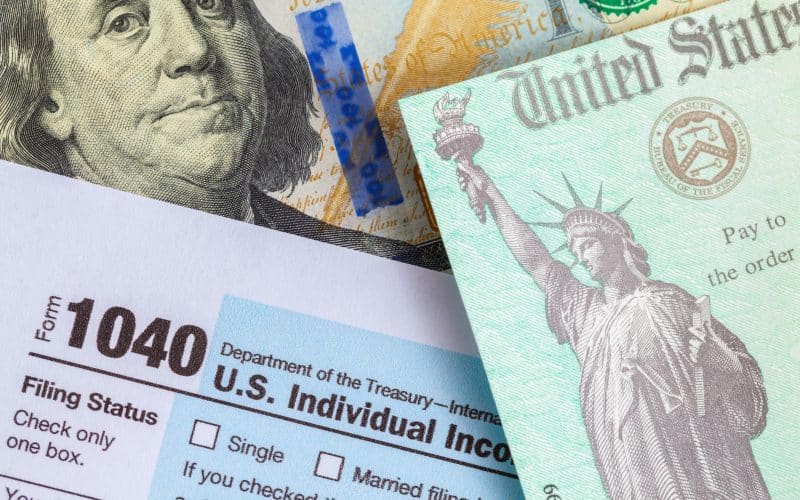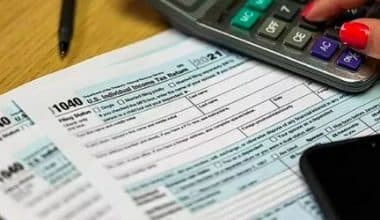In the U.S., it’s a legal requirement to file a tax return every year for yourself, a joint return for you and your partner, or a household return if you’re the head of the family. If you have a business or assets or spend a lot of time abroad, it’s also essential to file a federal tax return disclosing your worldwide income.
The US tax system is based on citizenship, not residency. Only two countries run a citizenship-based taxation system, the United States and Eritrea.
The US expects their citizens and Green Card holders to disclose their worldwide income and assets on their US tax returns each year.
Because there are so many different taxes to file based on your personal circumstances, you must understand precisely what you need to pay or what refunds you’re due to avoid any penalties for filing incorrectly.
Why Do We Pay Taxes?
The first income taxes were issued in 1913 when the Constitution gave Congress the power to impose taxes as a recovery method due to the effects of the Civil War.
Most of the taxes we pay today were issued in the 1920s and 30s, but never taxes, such as the wealth tax, are being brought into law today to maintain the country’s stability.
We should think ourselves lucky, though, as income tax used to apply to everyone, regardless of income or status, and wouldn’t account for filing jointly or as the head of a household. That means that if you were a low-income earner before, you’d still have to pay a relatively sizable tax too.
Types of Taxes
There are 3 main types of tax.
- Taxes on what you earn through employment.
- Taxes on what you buy.
- Taxes on what you already own.
It’s important to remember that the tax rate you pay varies based on how much you earn and what you do with that money.
For example, you may be taxed on your income at a flat rate of 10%. However, if you then go and use that income to purchase something with a 5% tax rate applied, you’re actually paying 15% tax out of the same pot of money at the end of the tax year.
Understanding what you’re paying as an American taxpayer is essential, so you know how much money you’ll have in the bank at the end of the year.
American Taxes on What You Earn
#1. Income Taxes
A personal income tax is based on the wages, salaries, and investments you receive in your household. This is typically based on your payment from employment or any money drawn down from owning your own business.
Income tax is a progressive tax. This means that the more you earn, the higher the percentage of tax that you’ll pay.
If you earn more money in your role, you’ll pay more income tax than a low earner. If you file your tax return jointly with a spouse, this can benefit you if one partner has a high income and the other has a shallow one (perhaps as a stay-at-home parent). This is because income tax is split evenly over both partners in a marriage, meaning that high earners can put half of their earnings in to cover the low earner. Meaning that each partner pays a lower percentage in tax.
Tax percentages vary from 10% to 37% based on earnings.
#2. Corporate Income Taxes
Corporate income taxes may affect you if you own your own business. Typically, in the U.S., businesses fall into two categories. They may be registered corporations that will have to pay corporate income tax based on the profits made by the business minus the expenses of running the business.
For this reason, corporate income tax affects the prices charged for goods and services and the employee wage to recoup some of the tax paid.
However, if you own a business as part of a partnership, are a sole trader, or own an LLC. This tax is paid through your standard personal income tax, meaning you may pay more in income tax as your business profits are included under you. However, you will pay less overall because you don’t have two tax returns to complete.
The standard corporation tax for the U.S. now sits at 21% as part of the Tax Cuts and Jobs Act 2017.
#3. Payroll Taxes
Payroll taxes are removed for salaries before payment from an employer. The tax percentage is based on your overall income. Again, higher earners will be taxed at a higher rate.
The amount you’re taxed will be seen on a payslip at the end of each pay period. These should be provided as part of a tax return to prove the amount of tax paid from your employee income.
These taxes are removed to fund social care. Medical care and upkeep of housing for the wider population.
American Taxes on What You Own
#1. Capital Gains Tax
Capital gains are the taxes that you pay on assets or investments. These include property, stock, shares, or valuables such as jewelry or cars.
The reason for the name ‘capital gain’ is that it is recognized when the value of an asset that you own has increased. If the shares you own in a company increase in value because the company is more profitable, you earn more money if you sell them. However, because the value has increased during your ownership, you will pay more tax because the value has increased.
#2. Property Taxes
These account for around 305 of state tax collections and are paid by anyone who owns a property, whether to live in or to let out.
The taxes collected from the property are often put back into local schools, roads, and emergency services funding.
Within this bracket, businesses may also need to pay for office buildings and TPP (tangible personal property), which could mean they pay extra for business vehicles, machinery, or other essential equipment.
#3. Inheritance Taxes
These are paid by people who inherit property or other assets in the event of someone’s death. Estate taxes are removed from the total amount before the heir takes on the inheritance. After this time, the inheritor may need to pay an additional inheritance tax once they’ve received the funds.
While other countries may allow for ‘gifting’ before a person’s death, avoiding this tax hike, the U.S. imposes a ‘gift tax,’ which means that any large sums of money transferred before death are also taxable.
#4. Wealth Taxes
These are taxes imposed on people with a large amount of money in the bank or held in assets. The threshold is set at a specific rate, which is changeable. Any individual worth more than the rate set at the time will be subject to a percentage of tax.
This is calculated on total wealth minus any debts. If the threshold was $1 million and the taxpayer had $1 million precisely in the bank but was $25,000 in debt, then they wouldn’t be subject to this tax.
However, the tax would be applied if they had no debt. The more money you have, the more tax you’re likely to pay.
American Taxes on What You Buy
#1. Sales Taxes
This is a tax that’s added when you purchase in a store. You will often see prices listed in the store minus tax. You will then need to calculate the price based on the one listed plus the tax rate in that state.
When you pay, you will also see a tax amount printed at the bottom of a receipt. These sales taxes are a source of state revenue and something that the consumer market and economy rely heavily on in the U.S.
This is a bit of a shock to the system if you’re living in the U.S. and pay U.S. taxes but aren’t from there, as it’s a system that isn’t widely used in other countries.
#2. Gross Receipts Taxes
If you own a business that sells goods, GRTs are taxes applied to sales. This is regardless of the sales carrying the business into profit and doesn’t account for business expenses either.
These taxes create ‘tax pyramiding’ where a tax is paid every time a sale is made, and each part of the production process, including the sale, is taxed.
Unfortunately, this tax type results in many start-up businesses failing in the first few years. Due to the likelihood of declaring a loss in the first few years because of the materials and assets required to start a business, smaller start-ups find themselves taking an even further loss as expenses are considered exempt from GRTs.
#3. Value Added Taxes
This is a tax paid by businesses on the value of goods that are produced at each stage of production.
However, the amount paid is deductible from the tax bill when the goods reach the next step in the chain, meaning that tax pyramiding doesn’t occur and the same value if tax is paid for a product at the end of the process, rather than tax building up each time the item changes hands, as n GRT.
However, when consumers eventually pay for the product, they pay the full VAT, which isn’t deductible.
#4. Excise Taxes
A consumer must pay these extra taxes on top of VAT for specific products or services. These are added as an incentive to cut down on the goods and services that aren’t condoned and are often named ‘sin taxes.’ These are applied to cigarettes, alcohol, and online gambling purchases.






